Wellness
Unlike a grade, well-being isn’t a goal that, once attained, remains fixed or permanent. It’s a dynamic state that largely depends on being self-aware and practicing sound decisions that foster good health, happiness, peace of mind and balance. It’s also a product of living a balanced life — that is, living in a way that integrates, develops and maintains the many dimensions of wellness: emotional, environmental, intellectual, occupational, physical, social and spiritual.

Wellness Opportunities and Resources
As you might have noticed, we recognize that wellness encompasses more than just physical wellness. So, although we strive to support your physical wellness with fitness classes, programs and special events, by recommending virtual fitness and health resources, and by making a wide range of recreational activities available on campus, we also strive to foster other dimensions that contribute to your well-being.
Here are links to some of our other wellness opportunities and resources:
A Closer Look at Wellness
When talking and thinking about wellness, it helps to have a common understanding of what we mean by "wellness," as well as the terms we use to define it, such as "aware," "choice" and "success." We offer you the following definitions as starting points for establishing that common understanding.
Well·ness \wel′-nəs\ n.
The state of being in good health; an interactive process of becoming aware of and practicing healthy habits and choices to generate positive energy, balance and success in your life.
A·ware \ə-wâr′\ n.
A state of knowing or realizing something, usually by being attentive and well-informed.
Elaboration: Being aware involves continuously seeking more information about yourself, others, issues, ideas, cause-and-effect relationships and other aspects of life. It may also entail challenging your assumptions.
Choice \CHois\ n.
The act of selecting or making a decision among two or more possible options; the possibilities or options themselves.
Elaboration: To make healthy choices involves considering a variety of options and selecting those that appear to be in your best interest and do no harm.
Success \sUHk-sEs′\ n.
The achievement of your aim(s) or goal(s).
Elaboration: Whether you have actually accomplished the particular goal you set out to accomplish is not the only measure of success. Some people equate putting forth maximum effort toward the achievement of a goal as success; others measure success by how close they have come to achieving a goal; still others measure success by how well they have fulfilled a constellation of important goals or maintained a commitment to their values. In most situations, your measure of success is up to you to determine.
Dimensions of Wellness
| Element Characterized By . . . |
Symbol | Symbol Explained | Manifestations |
|---|---|---|---|
|
Emotional Wellness The awareness and acceptance of your feelings and emotions. |
Image
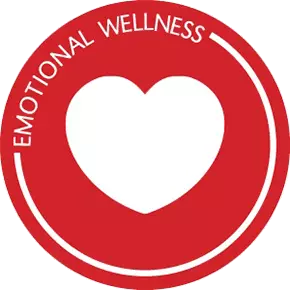
|
Heart The heart is traditionally held to be the source of emotions (vs. the mind/brain, which is typically associated with rational thought). |
|
|
Environmental Wellness The recognition that there is an interdependence between human beings, collectively and individually, and the natural world. |
Image

|
Tree This easy-to-identify symbol represents the natural realm. |
|
|
Intellectual Wellness An openness to new concepts, ideas and information. |
Image
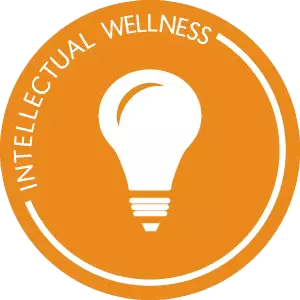
|
Light Bulb This symbol represents fresh thinking, innovation and creativity. |
|
|
Occupational Wellness Enjoying one’s chosen career, volunteer activities and/or other activities that contribute to society. |
Image
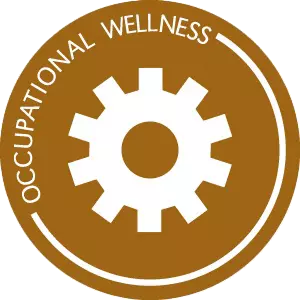
|
Gear with Cogs This toothed machine part represents a unit of labor or effort. |
|
|
Physical Wellness Having and maintaining a healthy body and mind by regularly getting good nutrition, exercise and rest and by avoiding and/or eliminating harmful habits. |
Image
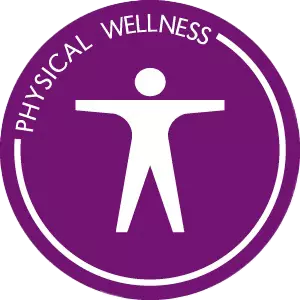
|
Person in a Circle This person with arms outstretched inside a circle represents the human body — one’s physical being. |
|
|
Social Wellness Performing social roles comfortably, effectively and without causing harm to others. |
Image
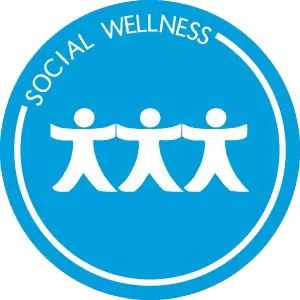
|
Three People with Linked Hands This symbolizes harmony, friendship and networking. |
|
|
Spiritual Wellness Having a sense of meaning and purpose in one’s life. |
Image
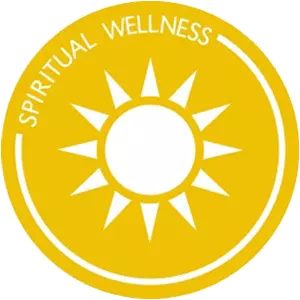
|
Sun The sun has a variety of meanings in religion and also represents the source of growth and vitality in the universe and the beginning and end of each day. |
|
Adapted from the University of Nebraska, Lincoln website


